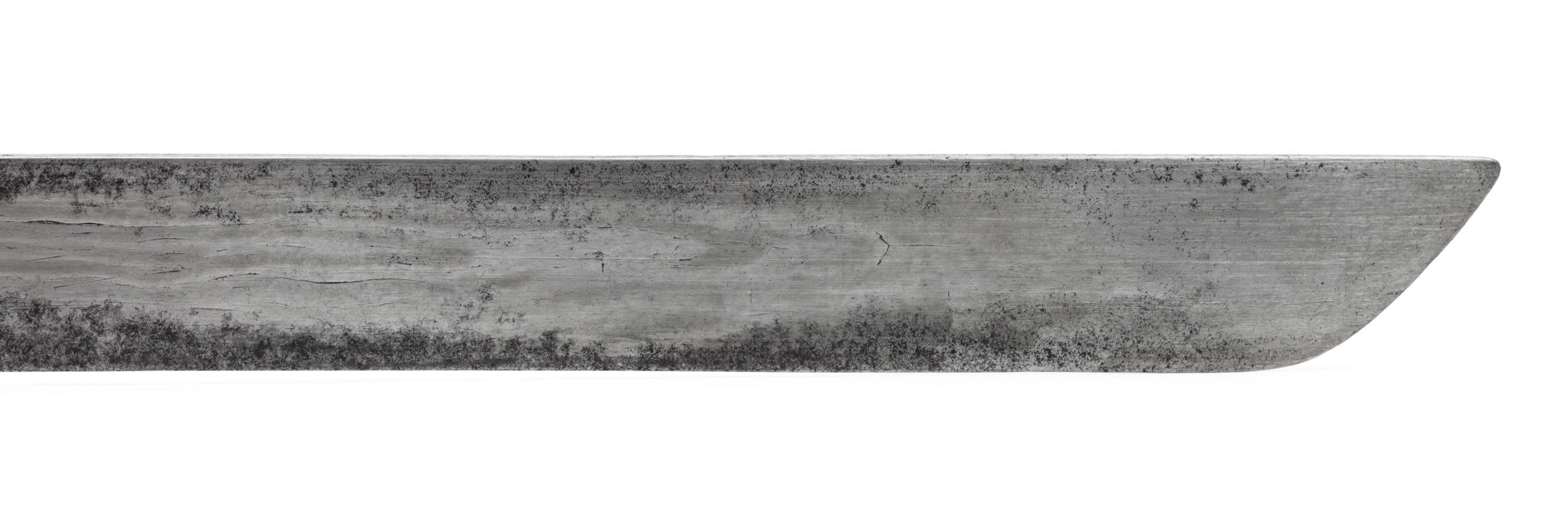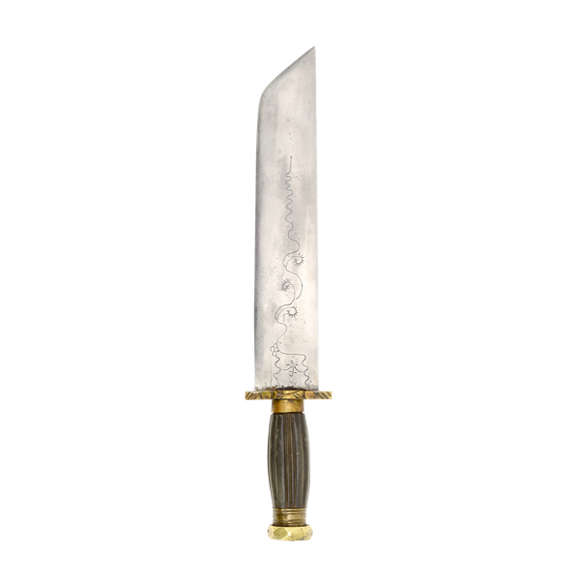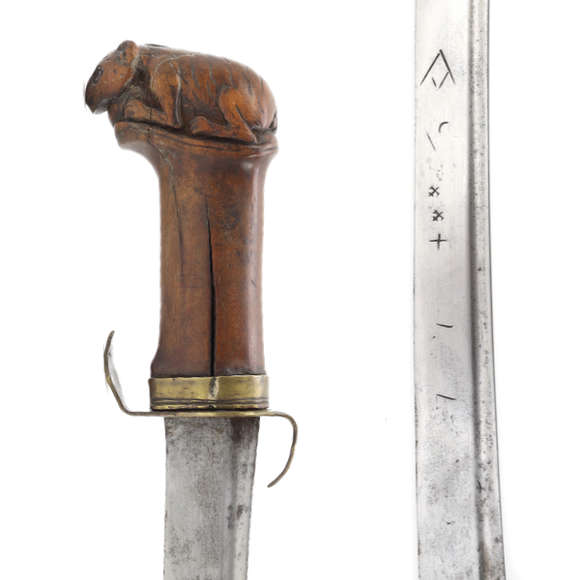The only set of its type known to me in both private and museum collections.
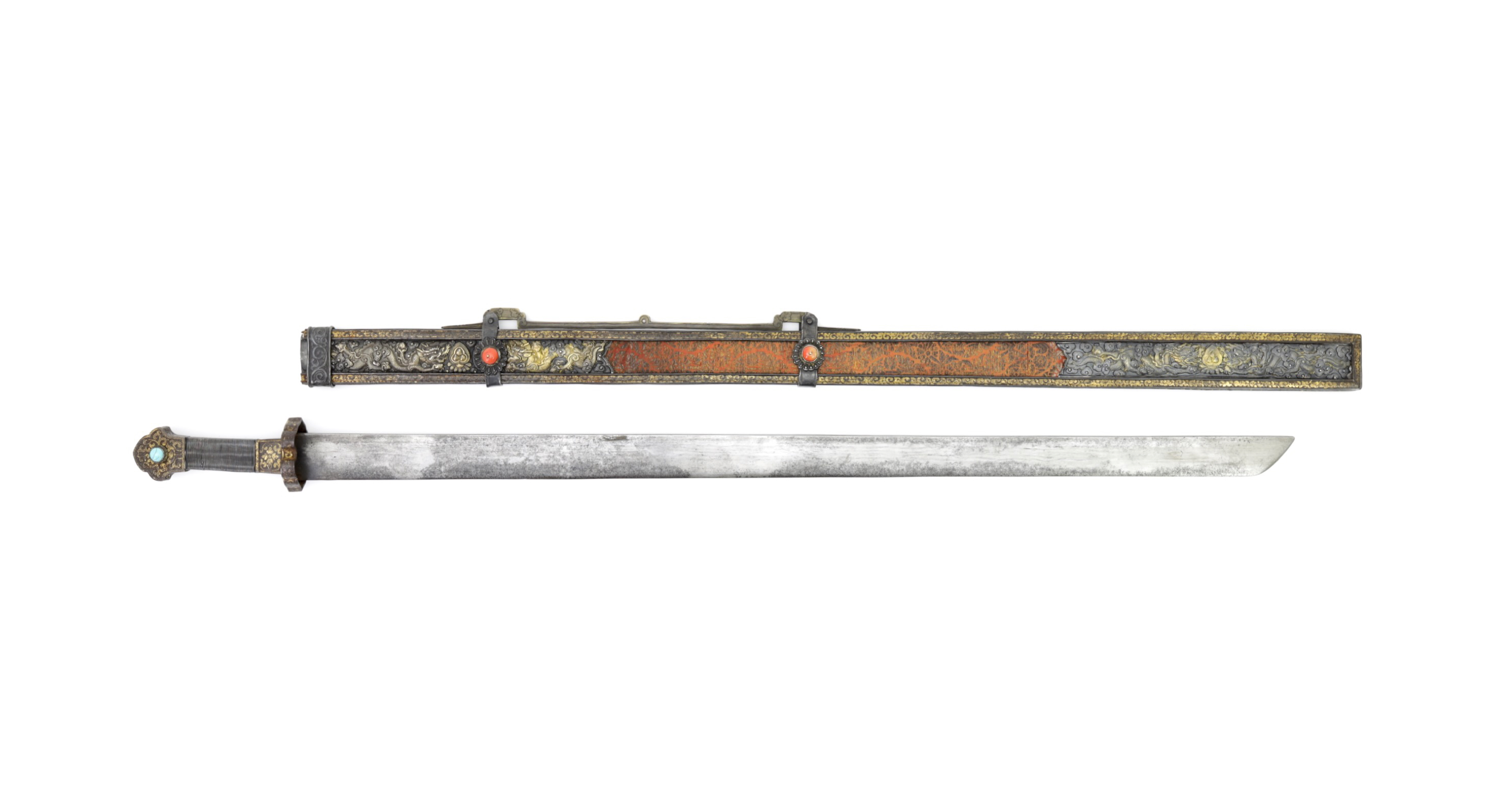
Sheathed 98.5 cm
Sword 94 cm
81.5 cm
Base 7 mm
Middle 6.5 mm
5 cm from tip 3.5 mm
Base 37 mm
Middle 35 mm
5 cm from tip 33 mm
Sheathed 1905 grams
Sword 1078 grams
28 cm from guard
(hilt side)
Iron, steel, brass, bamboo, wood, gold, silver, silver silk brocade, coral, turquoise
Tibet
Blade and iron mounts 17th-18th century
Silver silk brocade 16th century
Silver plates, mouthpiece & suspension bar 19th century
European antique art market
Description
A very good Tibetan dpa'dam. This large sword was meant to be worn slung from a belt, edge down, and would have been most likely worn by a cavalryman.
Blade stands out in size and weight, it is larger and heavier than most. Otherwise of typical form, pretty much straight with little taper in width, leading to an oblique point. Ridged spine. Surfaces show the typical hairpin forging that is found on most Himalayan blades.
Hilt
The hilt consists of a rectangular cross-section grip, bound with silver wire. The iron mounts consist of a lobed pommel, square ferrule and cup guard. Pommel and ferrule are decorated with swastika patterns, damascened with gold. The pommel holds a turquoise which is a recent replacement.
The hilt is at a slight angle to the blade, very unusual on a Tibetan sword, but apparently by design.

Scabbard
The scabbard has a classic U-frame with a squared end like these slung varieties tend to have. The frame is chiseled with stylized floral designs on the facing side with swastika designs around its edge, all damascened in gold.
The scabbard core consists of strips of bamboo, which must have been imported. It is covered with a beautiful silver silk brocade that retains most of its bright red background color. The fabric is probably very old; many pilgrims came to Tibetan monasteries bearing gifts, among which often fabrics that were kept in storage. The Tibetan climate is perfect for the preservation of fabrics, and so the Tibetans preserved large amounts of very old fabrics that they sometimes worked into new artifacts. This particular fabric is probably Mughal, 16th century.

The suspension bar is of brass, with silver bands, each holding a piece of coral. While the work is clearly old and Tibetan, it appears to be younger than the rest of the mounts and was probably a period replacement.
The scabbard is further decorated with a chiseled silver band at the mouthpiece and two silver plates held within the scabbard frame. They are finely decorated in repousse with designs of dragons in clouds in high relief and then fire gilt.
Markings
The Tibetan number 4 appears at the end of the scabbard.

Condition / restorations
Overall, in very good condition. The scabbard core is fragile, but the U-frame provides the necessary strength. Some staining on the blade but no damage. Mounts and brocade in very good condition for age. One of the two corals was lost, so I had a restorer replace it, and the turquoise of the hilt was missing and was replaced by a professional restorer. See photos.

The sword as I got it with missing coral and precious stone.
Comparable examples
This slung type with a square-ended scabbard is a rarer variety of the Tibetan sword.
One of the best examples of the type is the Metropolitan Museum, accession number 2014.262.1a–c. It was taken at Fort Taku in 1860 but is probably much older. The blade is dated 16th-17th century, with 18th-19th century mounts.
Another is in the Royal Armories in Leeds, accession number XXVIS.187. A fine piece with a rare forging pattern on the blade. Unusual for this type, it was slung but worn edge-up. Purchased at Sotheby's, 16 December 1980, lot 244. From the collection of Major A. D. F. White, North Staffordshire Regiment (Prince of Wales's). The various parts of this piece are also dated to the 17th-19th centuries.1
Finally, two are published by Robert Hales, both dated to the 18th century.2
Notes
1. See Donald J. Larocca; Warriors of the Himalayas.Metropolitan Museum of Art/Yale. 2006. Page 161.
2. Robert Hales; Islamic and Oriental Arms and Armour: A Lifetime's Passion, England, 2013. Page 199.
Conclusion
A very good example of the large Tibetan slung cavalry sword. Like most Tibetan swords, it consists of parts from different periods, but all are part of its working life. Apart from the very old fabric, the blade, hilt, and U-frame are probably the oldest, dating from the 17th-18th century. The silver plates and scabbard mouthpiece are more in a 19th-century style, as is the suspension bar.
The fabric covering is wonderfully preserved and even keeps much of its deep red luster, a rarity to find such an old fabric in such good condition on swords like this.
The use of materials and lavish decorations indicates it was made for someone of a high rank and status.














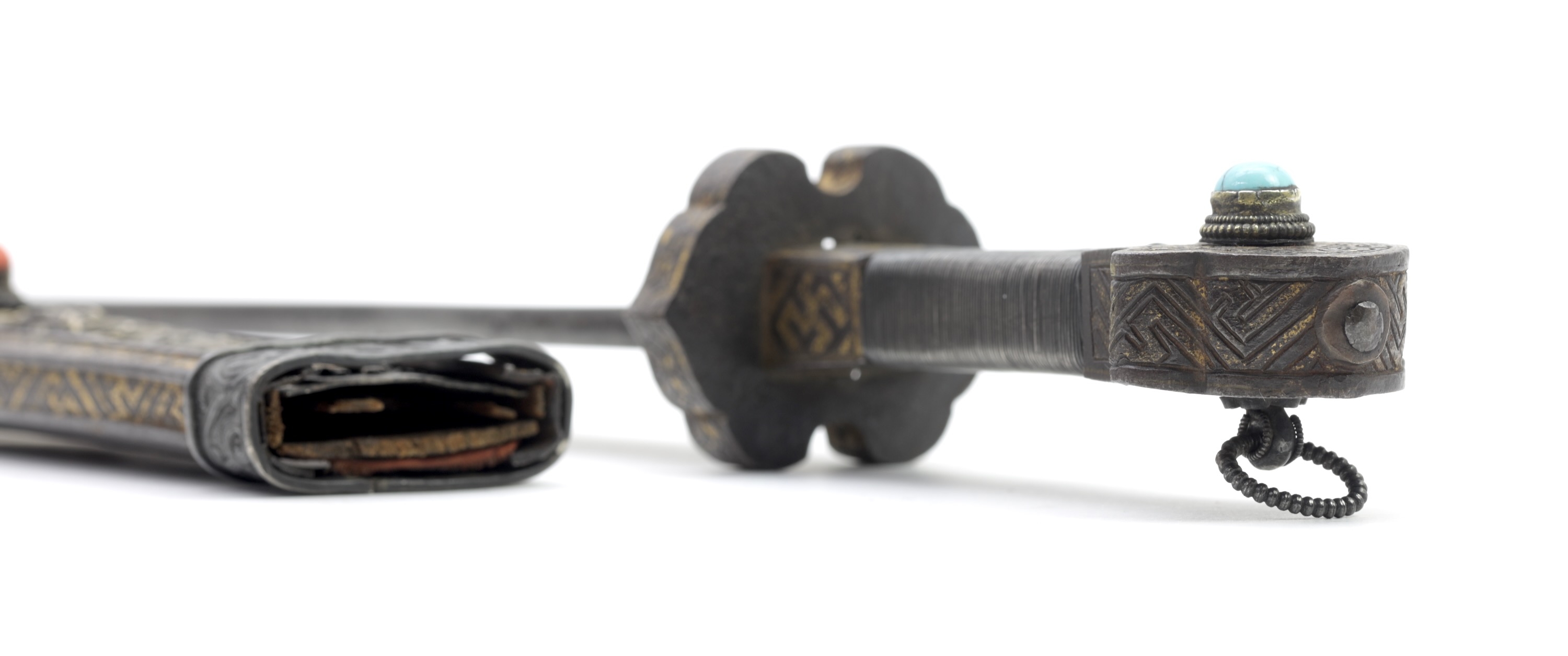



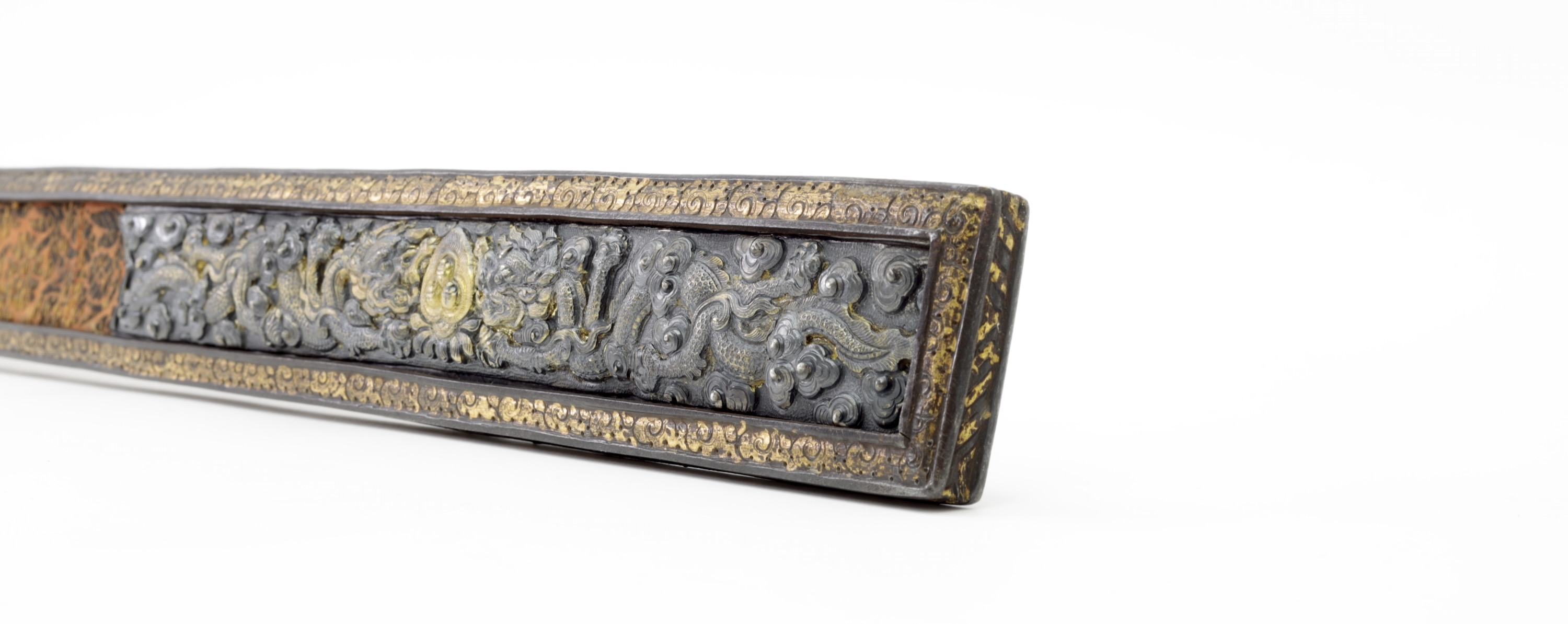




A rare type of dagger from South Kalimantan, loosely based on Islamic daggers seen worn by traders.

